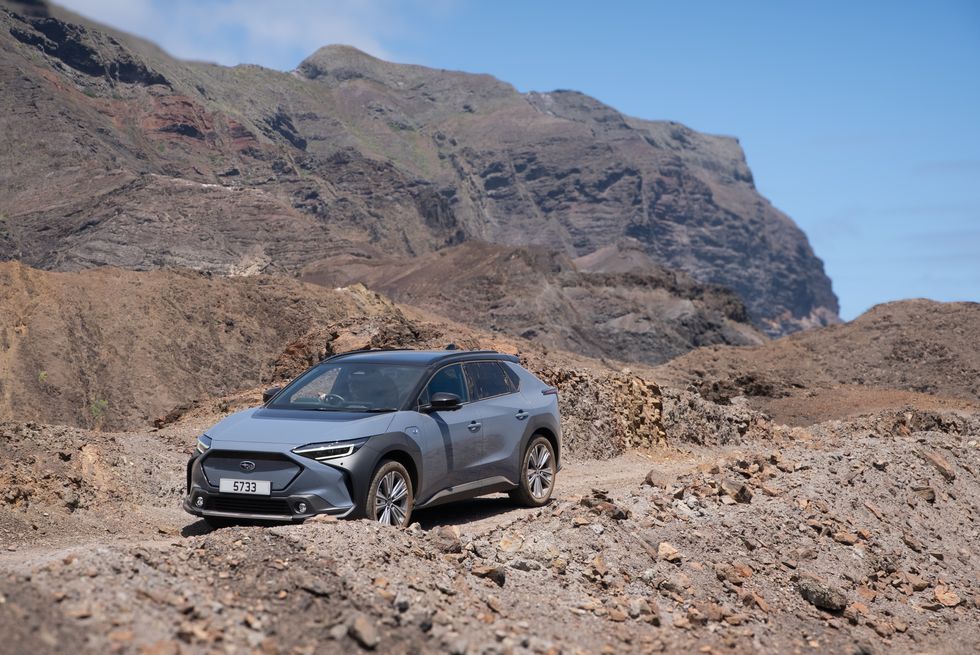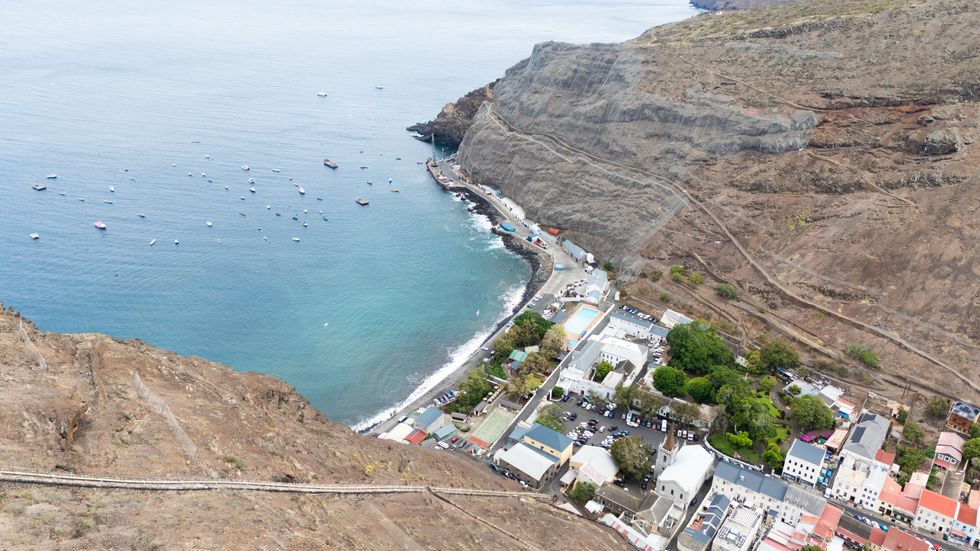Felix Reeves
Guest Reporter

History has been made with the installation of the world's most remote EV charger being installed 1,200 miles off the southwest coast of Africa.
A new project has been launched to work alongside the installation of the most remote public electric vehicle charging point in the British Overseas Territory of St Helena.
The installation marks a significant step in the island's ambitious plan to transition to sustainable power and zero-emission transport by the end of this decade.
St Helena, famous as Napoleon's final place of exile and home to 192-year-old tortoise Jonathan, currently has only four electric vehicles in use on the island.
Do you have a story you'd like to share? Get in touch by emailing [email protected]

For the two-month trial, Subaru UK shipped a 2024 Solterra electric vehicle to the island on the regular monthly supply vessel.
The arrival of Subaru's first all-electric car generated significant interest on the island, where Subarus are already popular for their robustness and reliability.
The Solterra underwent rigorous testing across St Helena's challenging terrain, including sealed and dirt roads, and the tight network of lanes across the volcanic isle's landscape.
A full day of driving, covering approximately 50 miles on the 10x5 mile island, consumed only 20 per cent of the battery capacity.
The charging point will form part of an expanding network being installed for a new fleet of electric cars arriving in 2025.
The trial project brings together global car manufacturer Subaru and Norwegian charging brand Easee in collaboration with the St Helena Government.
An Easee Charge unit has been installed next to the island's Museum in Jamestown, connected to the local grid by Connect St Helena Ltd.
The vehicle's regenerative braking technology proved particularly effective, allowing battery recharging on the island's numerous downhill sections.
Lorraine Bishton, Managing Director of Subaru UK, said: "From Subaru's perspective, it's an honour to be involved in a project that could potentially lead to a fully sustainable future for Saint Helena.
"If you can operate an electric vehicle in this type of environment then you really can anywhere."
St Helena currently generates up to 25 per cent of its power needs through wind and solar installations, with the remainder coming from a diesel power station using £5million of fuel annually from South Africa.
The Government aims to have 80 per cent of the island's power generated by renewable sources by 2028.
LATEST DEVELOPMENTS:
- Police issue urgent warning after driver has car stolen when defrosting windscreen - 'Easier target!'
- New DVSA rule changes introduced last week criticised for long delays - 'Just get on with it!'
- Drivers face £130 penalty as council makes traffic orders permanent for first time in two years - 'Nightmare'

Adam Rodgers, Managing Director of Easee UK, emphasised the project's significance: "We don't believe location should be a barrier to the EV transition at all. The robustness, durability, and efficacy of our charger really is a powerful accolade of which we take pride."
Mark Brooks, St Helena Minister for Treasury and Economic Development, outlined the next steps: "We want to roll out the infrastructure so that we are using electric vehicles more and more on the island."
The Government is offering incentives for residents to import electric vehicles, as the territory aims to become one of the first in the world with a zero-emission automotive footprint.
Find Out More...
